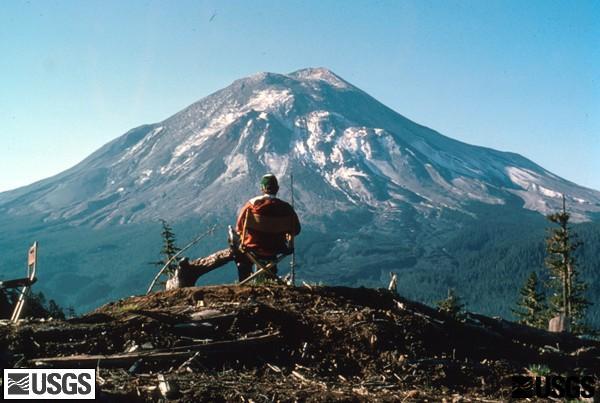The violent eruption of Mount St. Helens on May 18, 1980 was not a one day event. For two months magma had been accumulating below the volcano, creating a huge ominous bulge on the mountain’s north slope, and generating thousands of small earthquakes.

A USGS geologist at Coldwater II observation post watching Mount St. Helens. USGS





